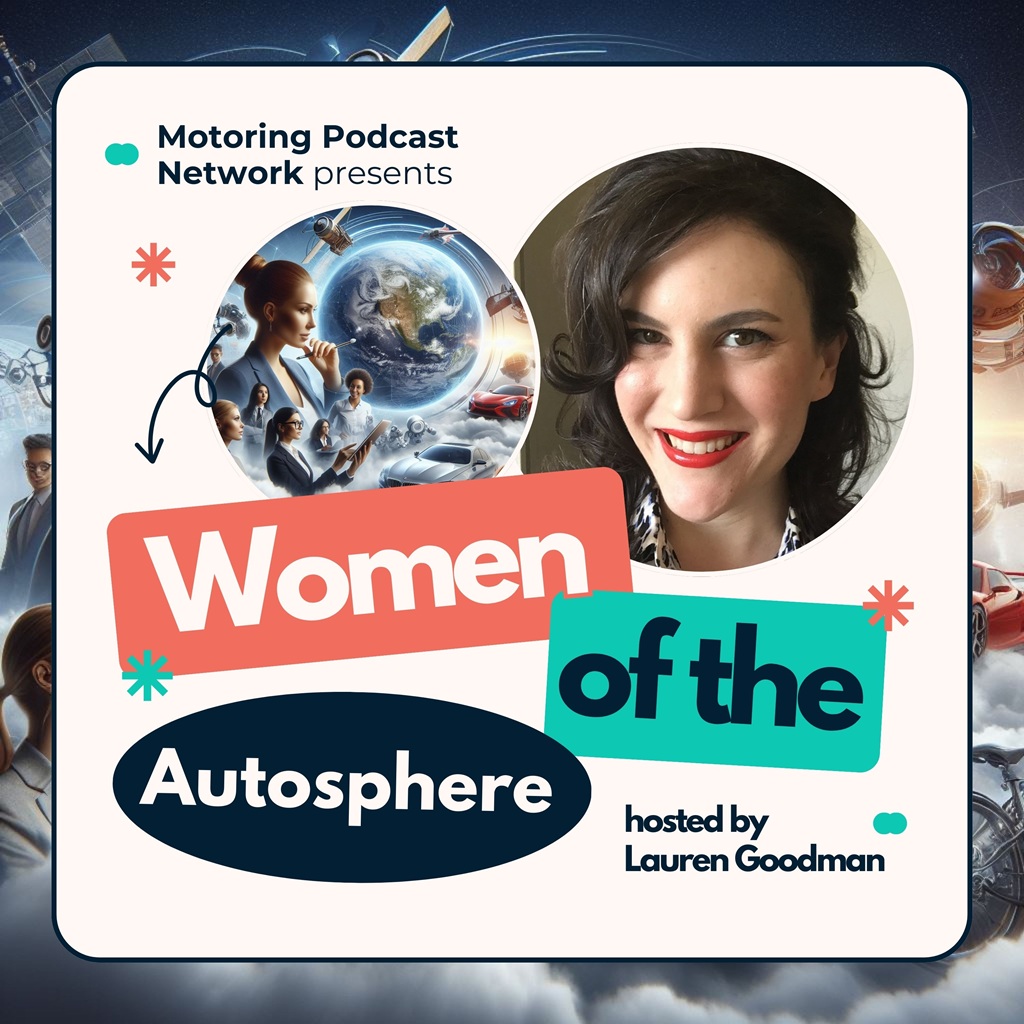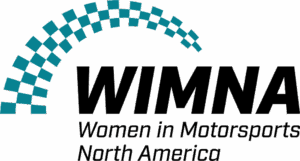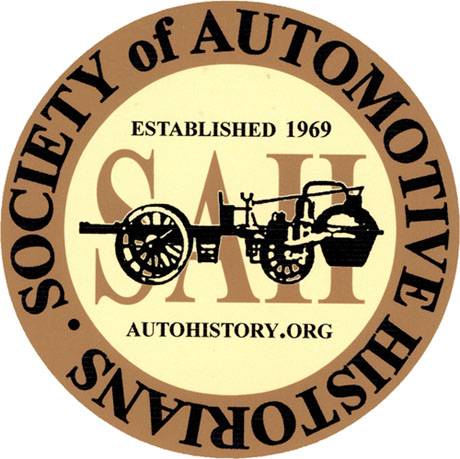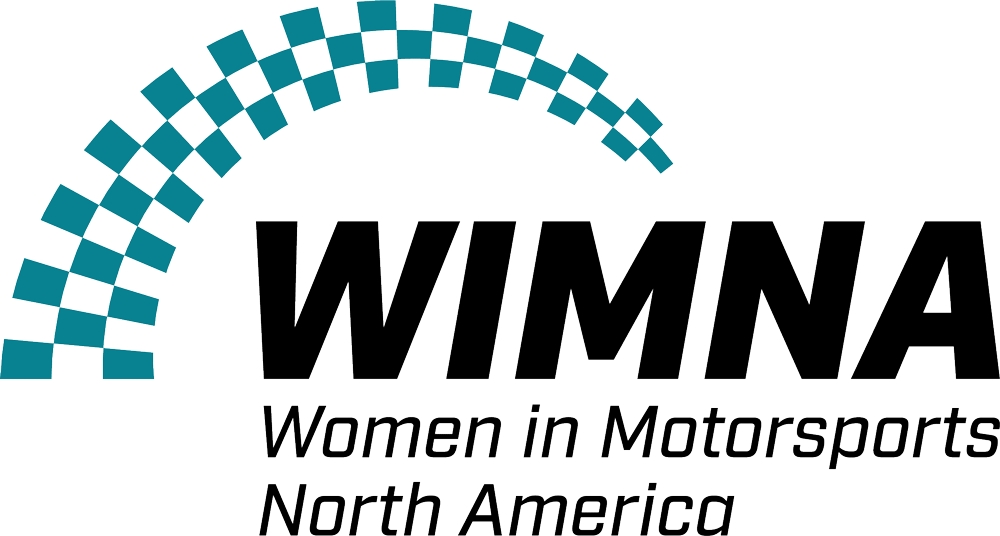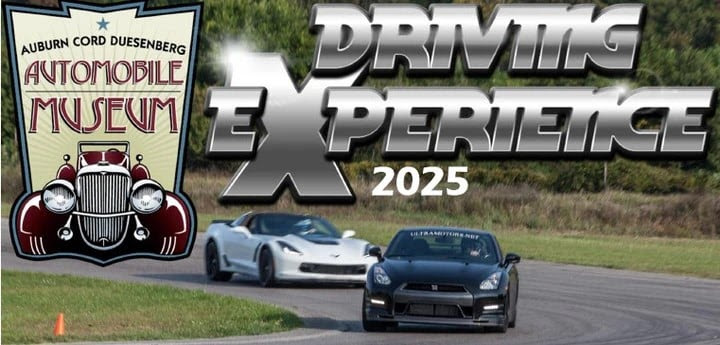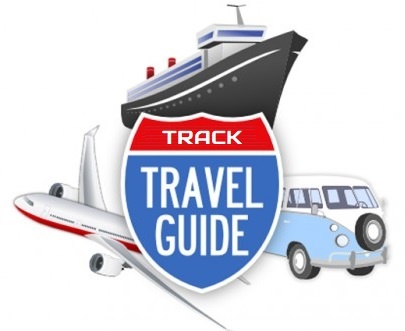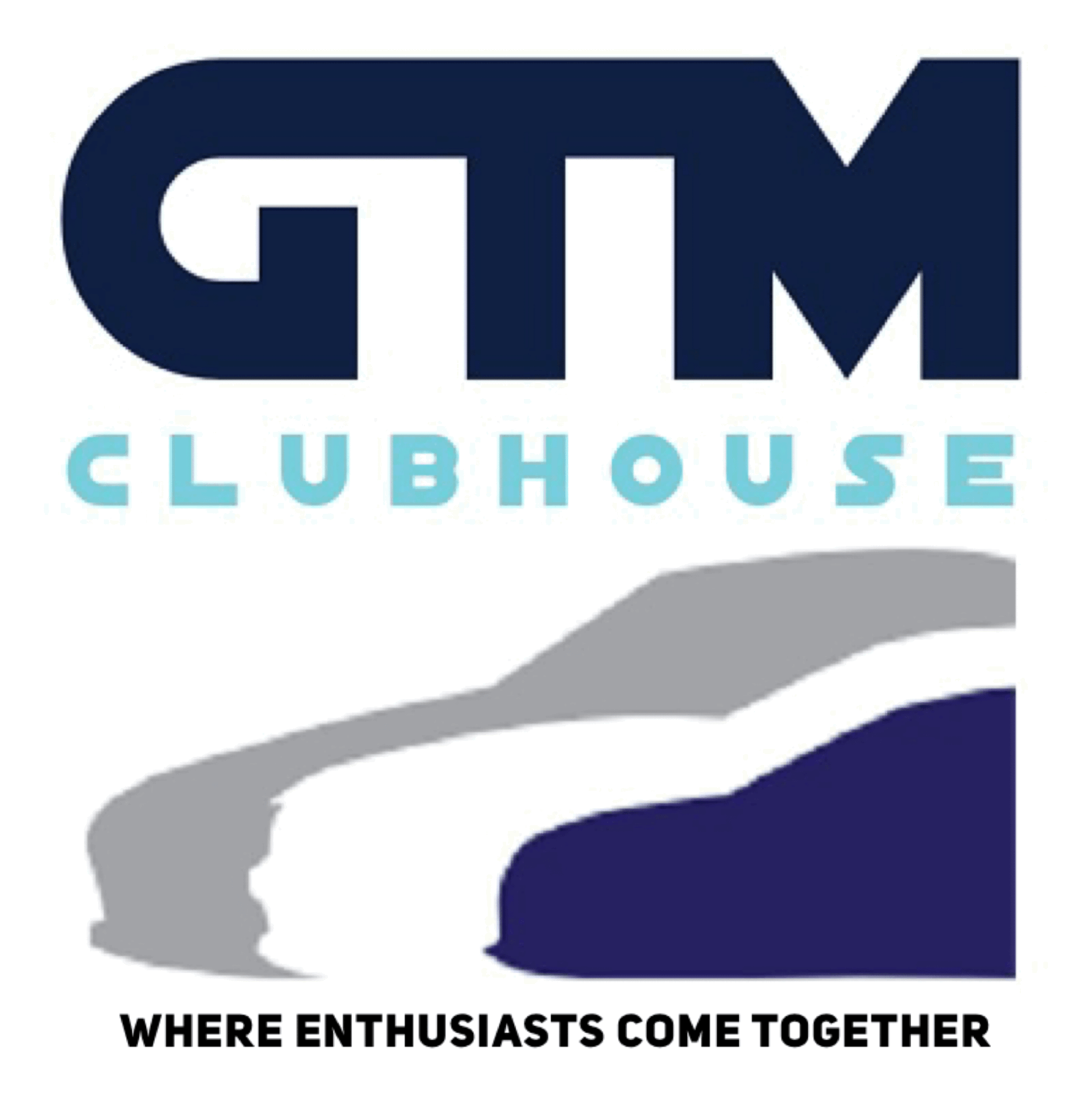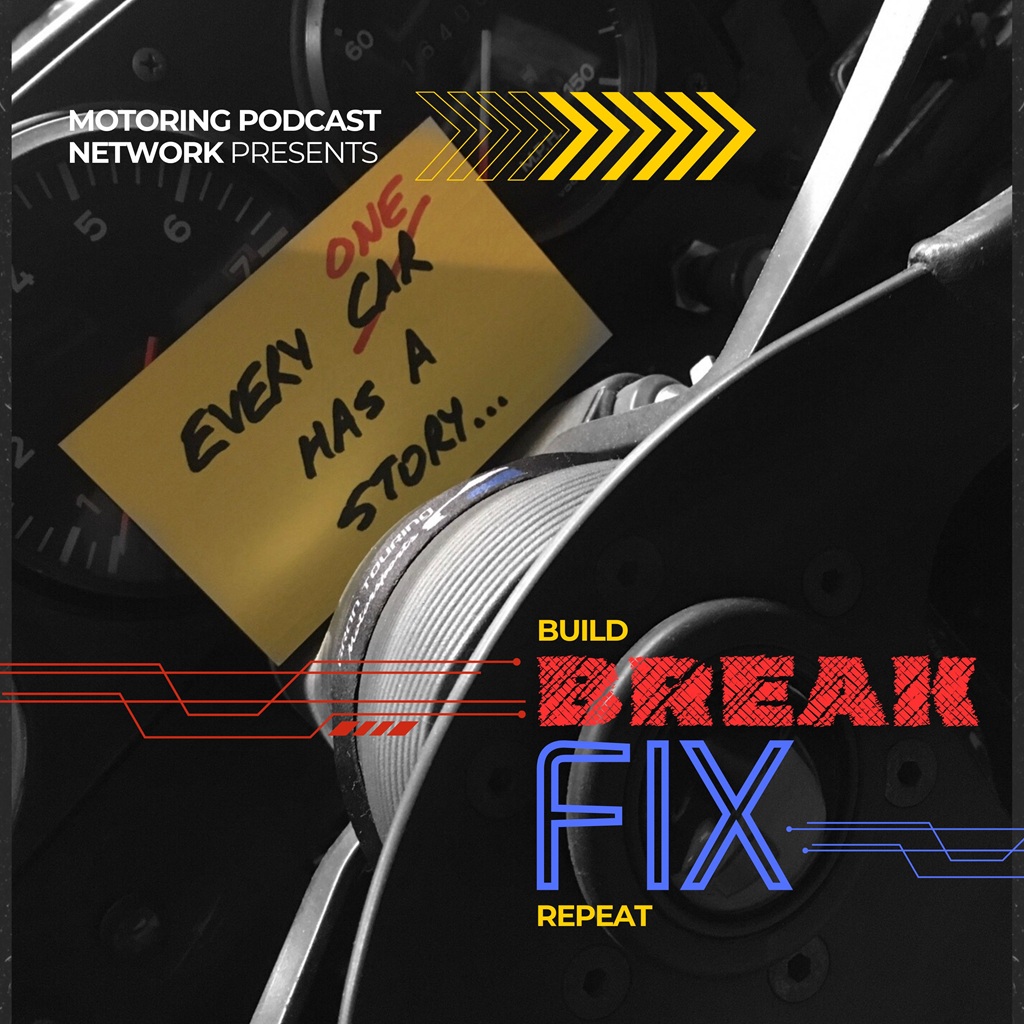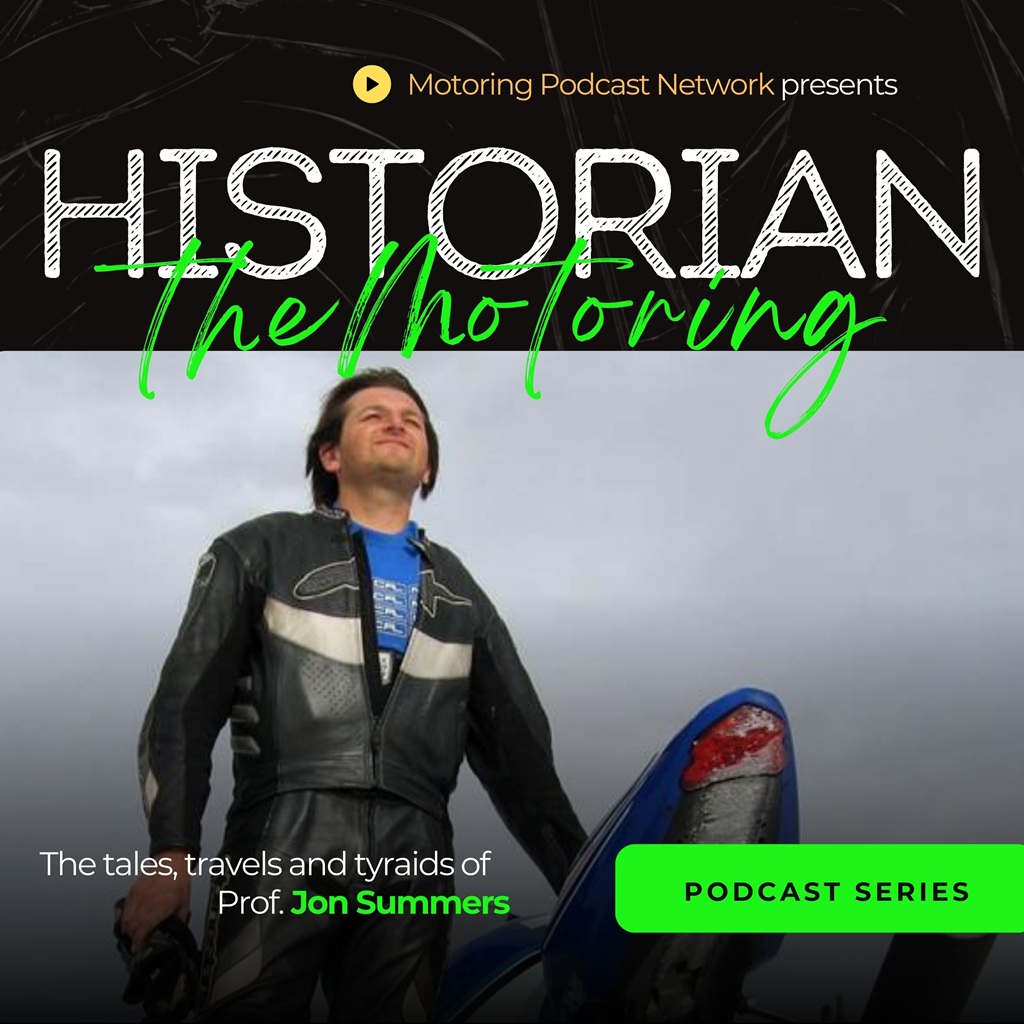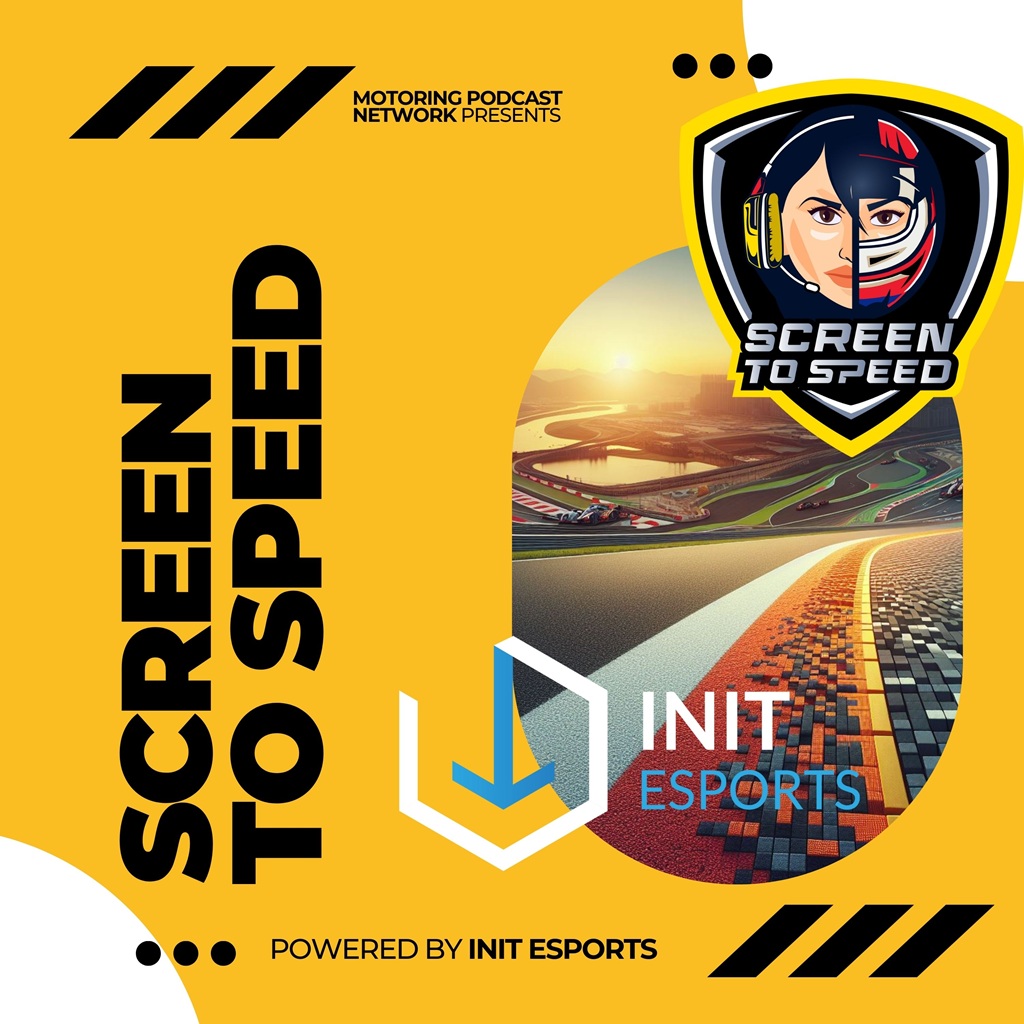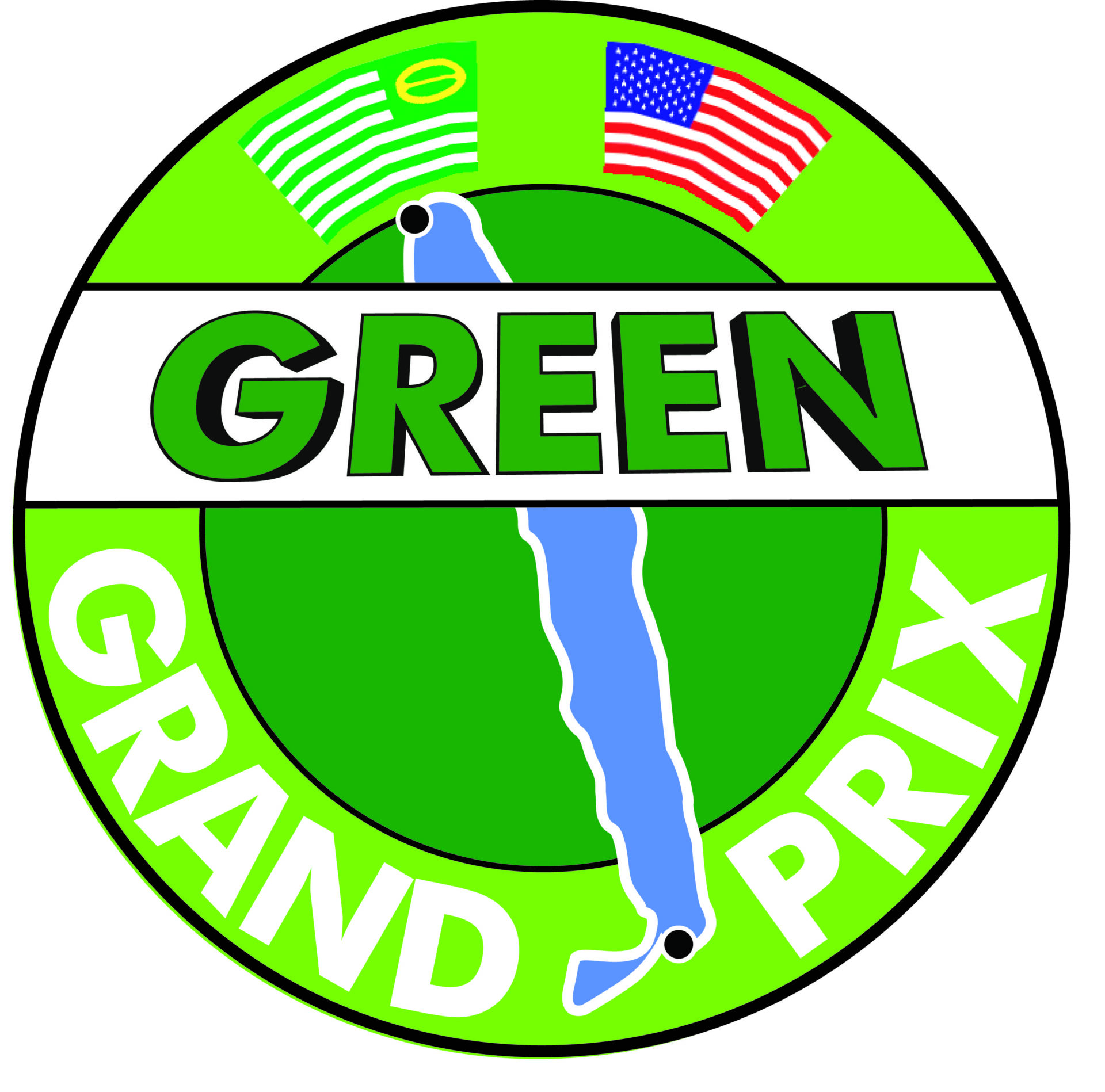Where horsepower meets heart, and speed knows no limits! We’re shifting into high gear for a special panel episode in honor of International Women’s Month!
From burning rubber on the track to breaking barriers in a male-dominated sport, today we celebrate the fearless women of drag racing. Joining us are Erica Enders, Ida Zetterstrom, Megan Meyer and Maddi Gordon … incredible drivers from around the world—pioneers, champions, and all-around speed demons who prove that racing isn’t just for the boys.
About our Panelists
Erica Enders has solidified her place as one of the most successful and influential drivers in NHRA history. A multi-time NHRA Pro Stock champion, Erica shattered barriers as the first woman to win a Pro Stock world championship, proving her dominance in one of drag racing’s most competitive categories. With her sharp reaction times, precise driving skills, and deep technical knowledge of her race cars, she has consistently been a top contender in the ultra-competitive world of Pro Stock.

Starting her career in Junior Dragsters, Erica quickly climbed the ranks, making her professional debut in NHRA Pro Stock and becoming a household name in motorsports. Over the years, she has accumulated numerous national event wins, setting records and making history along the way. As a trailblazer for women in drag racing, Erica continues to inspire the next generation of racers while maintaining her position at the forefront of NHRA competition. Her relentless pursuit of excellence has cemented her legacy as one of the greatest drivers in Pro Stock history.
Ida Zetterström is a rapidly rising force in the world of drag racing, making waves as one of Europe’s most talented and determined drivers. Originally from Åland, Finland, Ida first gained attention in the drag racing scene through her success in the Super Street Bike category, where she demonstrated exceptional skill and fearlessness on two wheels. Her transition to four-wheeled competition in the high-horsepower world of drag racing has been nothing short of spectacular.
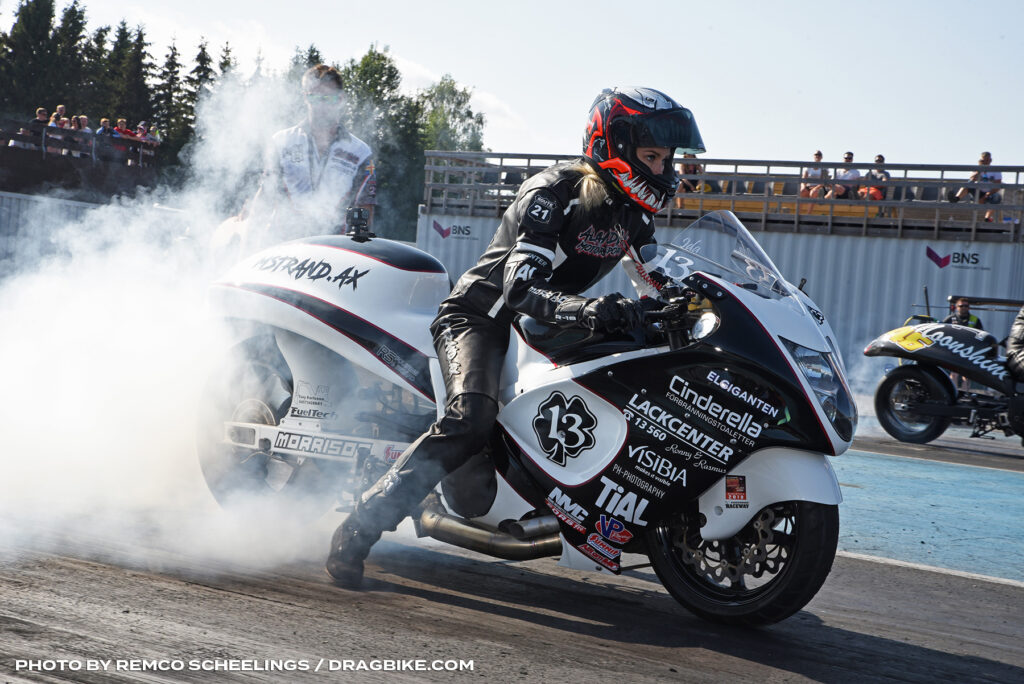
Now competing in Top Fuel, the pinnacle of drag racing, Ida continues to impress with her blistering reaction times and ability to handle the immense power of 11,000-horsepower nitro-fueled machines. She has already claimed historic wins, record-breaking runs, and significant milestones, solidifying her reputation as a serious competitor on the European drag racing circuit. With her relentless drive and passion for the sport, Ida Zetterström is well on her way to becoming one of the top names in global drag racing.
Megan Meyer is a highly accomplished drag racer who made history in the NHRA’s Top Alcohol Dragster (TAD) category. As the daughter of legendary racer and team owner Randy Meyer, Megan grew up immersed in the world of drag racing and quickly established herself as a formidable competitor. Her precision, discipline, and natural talent behind the wheel propelled her to back-to-back NHRA Top Alcohol Dragster World Championships in 2019 and 2020, making her the first woman to achieve consecutive titles in the class.
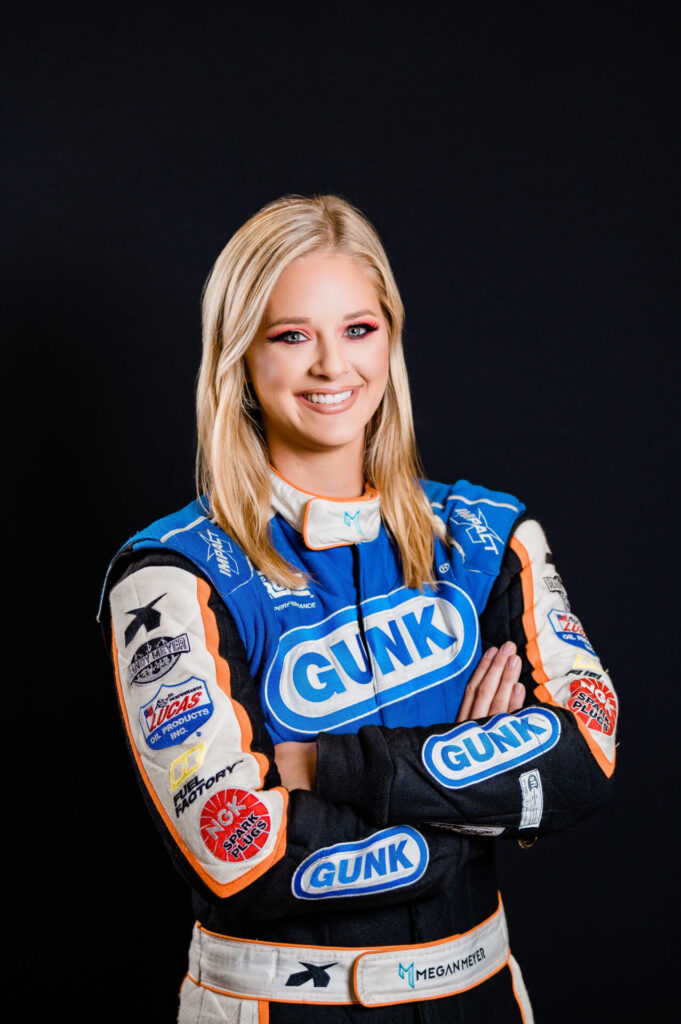
Beyond her success on the track, Megan has become an influential figure in the motorsports community, inspiring the next generation of racers—especially women in drag racing. After stepping away from full-time competition, she has focused on mentoring young drivers, managing the family’s racing team, and expanding her presence in the motorsports industry through media and branding initiatives. Her legacy as a fierce competitor and dedicated advocate for women in racing continues to shape the future of the sport.
Maddi Gordon is an up-and-coming drag racer making waves in the NHRA sportsman ranks. As part of the next generation of talented young drivers, she has quickly gained recognition for her skill, determination, and passion for the sport. Competing primarily in the Top Alcohol Funny Car category, Maddi has shown impressive performance on the track, piloting high-horsepower machines with precision and confidence.
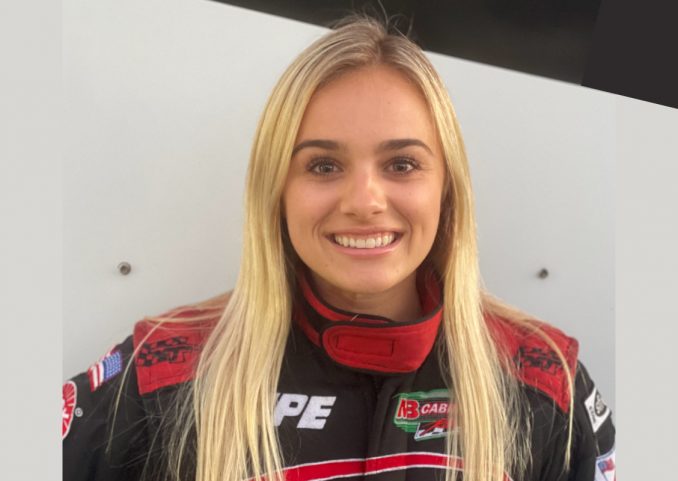
Coming from a racing family, Maddi has embraced the challenge of competing in one of drag racing’s most intense classes, gaining valuable experience and earning respect from fellow racers and fans alike. As she continues to develop her career, Maddi Gordon is poised to become a key figure in the future of drag racing, carrying on the tradition of strong female competitors in the sport.
So buckle up, because we’re diving into the thrill of competition, the challenges of the industry, and what it truly means to be a woman in the fast lane.
Tune in everywhere you stream, download or listen!
 |  |  |
- About this Series
- Show Notes
- Transcript
- Highlights
- Learn More
About this Series
Lauren Goodman is the Supervising Producer of Media and Exhibitions at Revs Institute in Naples, Florida. Widely regarded as one of the top automotive museums in the world, Revs Institute is dedicated to the study of the automobile and offers visitors an exceptional opportunity to view over 100 of the most influential automobiles of our time. After earning her MFA in screenwriting from Florida State University’s College of Motion Picture Arts, Lauren spent the next six years in Hollywood in creative development for film and television, as well as in production for TV and new media advertising. A chance visit to Revs Institute led to volunteering at the museum and researching the history of women in racing.
Show Notes
- What first drew you to the world of drag racing, and were there any female role models who inspired you along the way?
- Drag racing is all about adrenaline. Can you describe what it feels like to be behind the wheel at top speed?
- What are some of the biggest misconceptions people have about women in drag racing, and how do you respond to them?
- Drag racing has traditionally been a male-dominated sport. Can you share a moment in your career when you felt like you were breaking new ground as a female racer?
- Sadly there are drag strips that are closing around the country, as a younger generation what would you do to raise drag racings exposure and interest?
- What’s next for our Panelists? Anyone considering another discipline of motorsport?
and much, much more!
Transcript
Crew Chief Eric: [00:00:00] The following episode is brought to you in part by Women in Motorsports North America, a community of professional women and men devoted to supporting opportunities for women across all disciplines of motorsport by creating an inclusive and resourceful environment to foster mentorship, advocacy, education, and growth, thereby ensuring the continued strength and successful future of our sport.
Lauren Goodman: Well, welcome to everyone here because this is pretty special tonight. Where horsepower meets heart and speed knows no limits, we’re shifting into high gear for a special panel in honor of International Women’s Month. From burning rubber on the track to breaking barriers in a male dominated sport, today, we celebrate with the fearless women of drag racing.
Joining us Our Eric Enders, Ida Zetterstrom, Megan Meyer, and Maddie Gordon. Incredible drivers from around the world, pioneers, champions, and all around speed demons who prove that racing isn’t just for the boys. So buckle up, because we’re driving into the thrill of [00:01:00] competition. The challenge of the industry and what it truly means to be a champion.
Crew Chief Eric: And with that, I’m your host crew chief, Eric, from the motoring podcast network, along with Lauren Goodman from the revs Institute, welcoming everyone to this virtual center conversation, Erica, Ida, Megan, and Maddie. Welcome to the show.
Maddi Gordon: Thank you. Thanks for having me.
Crew Chief Eric: Well, like all good stories, there’s an origin.
So let’s. Briefly talk about how everybody got into motor sports, more specifically drag racing. What drew you into the world of drag racing? And were there any female role models that inspired you along the way? Go ahead, Maddie.
Maddi Gordon: I’ve kind of been born into it. I went to my first drag race at seven days old, never looked back.
My grandpa started drag racing and then my dad, and then now my sister and I, so I mean, we’ve been involved in it since we were kids. Grew up through the junior drag racing program and did super comp and worked on the funny car ever since we were little kids. But as far as women role models, that has inspired me really honestly, even though my mom’s not a driver, she’s inspired me so much and really [00:02:00] helped, of course, me and my sister through everything in life.
Through the ups and the downs, racing is very challenging and really can beat you down sometimes, but my mom has always been there and always has a way of cheering us up or kind of keeping us in line. But so I would say my mom’s definitely being my biggest woman role model for sure.
Crew Chief Eric: Ida, how about you?
Ida Zetterstrom: So yeah, I also grew up at the drag strip. I was three weeks old when I was there first time. So Maddie beat me to it on that one a little earlier, but yeah, I’ve definitely been at the track for a long time. My parents and especially my dad has been involved with racing and didn’t really race himself.
During the years I grew up, he raised before I was born, but worked with other teams. He has American car repair shop and engine dyno builds engines and so on. Worked with a lot of pro stock teams and promo teams. He actually raised pro stock himself in the late eighties where I was born. So I kind of always been at the track, started racing unit tracks to around eight years old.
I always knew I wanted to start racing. We never really chased a championship when I raced the juniors, just because I always went to the races where my dad worked. So we [00:03:00] kind of just loaded that dragster in together with the team that he worked for and then just went to the races where it fit in. But we had a really great growing up in that class, had a lot of success and we, it was just a perfect in, you know, if you.
Getting into drag racing and you’re really getting the hold of that class. Like you understand the business of drag racing or like what it goes down to. And I feel like a lot of the champions today and the really great drivers, they got to start there. So I’m really happy I got to get my start in there.
I feel like growing up, I can’t pinpoint one specific female role model. I think that there’s been many of them along the way. Drag racing has always had a lot of strong female drivers throughout the years I grew up. Not just in the classes that I’ve been in, but in others too. You and growing up in junior drag, so we were almost 50, 50 on girls and boys.
So it was never really a thing that women wouldn’t be there racing. We had the top fuel champion, uh, Anita Meckler was running when I grew up and raised other classes, and obviously that was a big inspiration and even looking at a lot of the female drivers [00:04:00] overseas, I feel like there’s a lot of them here in NHRA that I admired a lot when I raced over in Europe and many of them for different reasons.
I mean, some of them I might admire because. They were so good at their marketing, their social media, like how they presented themselves. Some of them were just badass drivers. I remember I always looked up to Erika for her great reaction times and her just being a really badass female in that class and dominating.
In a class, there haven’t been a lot of women. A lot of the other classes, there has been, but that was really somewhere where it’s like she was a pioneer. in that and there’s just been many of them throughout the years where I feel like at the track you are constantly surrounded by strong female role models and it’s very empowering to see.
Erica Enders: Well thank you Ida, I appreciate the compliment. Yeah much like the other ladies I got my start growing up at the track from the time I was a little kid probably before I could walk and then growing up watching my dad race and I’m a daddy’s girl. So he’s my hero, still is, and just wanted to follow in his footsteps.
He never raced professionally, just in the sportsman ranks and as a hobby. It’s all I ever wanted to do and [00:05:00] I started junior drag racing when NHRA came out with the junior drag racing league in 92. I was eight about to turn nine and that was kind of the beginning of the end. My sister’s three years younger than me and when she turned eight, she started as well.
So we toured the country driving juniors. My dad sold his stuff to help us focus on what we wanted to do. And we raced juniors for nine years. I competed in the Lucas Oil Series for five years. And this is my 22nd year in Pro Stock. Like everyone else here, I dedicated my whole life to the sport. And it’s something that I’m extremely passionate about and love very much.
Work hard at it every single day. I’m fortunate enough to work at the shop every day as well. And it’s just all hands on deck all the time to make our dreams come to fruition. And that’s pretty much it. But as far as female role models growing up, I was a huge Shelly Anderson fan. She had the Jolly Rancher sponsored back then.
And my sister and I were kids. We were like those super annoying fans. I think we stood outside of her ropes. and got her autographed like four or five times a weekend. So she probably got sick of seeing us around, but it’s definitely [00:06:00] cool to see her out there still with her husband and her two kids are competing as well.
And that’s really awesome. But I mean, you can’t deviate from the Shirley Maldoney legend and, uh, Angel as well. Those are the gals that I followed when I was younger and through the years. became friends and allies and just been drag racing all day, every day, all the time.
Megan Meyers: Megan, how
Crew Chief Eric: about you?
Megan Meyers: Yeah, well, very similar story to all the other ladies here.
My dad started racing in the 70s. I have no idea when my first race was as a kid, but I’m pretty sure I was Still, you know, a newborn back then I got started with junior dragsters when I was 10 years old, had to wait for my little sister to turn eight. So that way we could get it at the same time. I still remember the day we picked up those juniors.
I was completely obsessed. So it was. Two brothers that were aging out and we got everything that they had cause they didn’t need anything else anymore, including their fire suits. That was way too big for me, but I put the whole thing on including like the neck harness and everything and just would not take it off and had a very [00:07:00] successful career with junior drag racing one, two track championships there.
And we had. Such a great community there. Just like what you do was talking about. It was about like 50, 50 between boys and girls that we were racing junior dragsters with, and my older cousins were racing with us at the same time. So we had a very good support system because my dad was still chasing.
NHRA in his top alcohol dragster. So he missed a lot of the races that we had at our local track growing up. And so it was either my mom would load us up in the dually and the trailer and take us there, or my uncle or someone else’s parents would have to take us until I was actually old enough to drive myself.
And then it’s so funny. Cause. When my sister and I were in the same class back then, which was the 13 to 18, I’d have her be like the very first car up in the staging lanes. I’d start her junior dragster and like, you know, set her idle. And then I’d run back. I’d have mine up there at the front of the staging lanes.
And I’d wait till everybody else ran. And I’d get my [00:08:00] suit on and have someone else’s parents start my junior dragster, and I can go and do my run. We learned at a very young age that if we wanted to do it, we had to be. very dedicated. We have to give it 100 percent and very similar to Maddie’s story. My dad made us work on the cars nights and weekends.
We would rather be out playing with our friends, you know, but we were dedicated to drag racing and still am for me growing up quite a few role models, including Erica, especially when, you know, her movie came out is right when I was at that perfect age for it. Also, Ashley Forrest, When she was racing in Top Alcohol Dragster, we were still pretty young.
She was sponsored by Barbie. That was at the time where my sister and I were playing with the Barbie dolls, and she was the nicest person ever. And like, we’ll never forget this, how she treated us like we were like her little sisters. Even though, you know, she has her little sisters. But she’d always let us come into her motorhome or her trailer, and we’d get to watch movies with her between her runs.
Like, she just was so nice with hospitality with us and would [00:09:00] send us Barbie dolls for Christmas gifts. And she’d even still send us like handwritten cards. And so she made such a good impression on us of how to treat other people in this sport. And then also another role model that I had growing up is Diana Harker, who she doesn’t race anymore, but she was the first female driver on our team.
And it was. back in like 2007 2008 when she drove for my dad. She has a twin sister who actually drove for a different Top Alcohol Jaxxer team, but Diana taught me so much with how to like race competitively, but then also how to have your eyes set on other stuff outside of racing and so she was a photographer and her twin sister was in marketing and so they were doing a bunch of graphic design and websites and photography and all that stuff.
They had amazing branding and all that and so that’s what led me on to the path of wanting to. Get into marketing and social media and do all that when that became big in racing. So, um, [00:10:00] which led me to something completely different than I thought.
Crew Chief Eric: Listening to your guys stories, this being the third of four in our mini series here dedicated to women in motorsport for International Women’s Month is how similar.
A lot of the, what I call intergenerational racing. There is across all the disciplines. A lot of people are like, yeah, my dad and my uncle and my brothers and my sister, and it’s so family oriented, especially short track is very close to you guys in that sort of way. You know, everybody’s hands on and this and that, but a lot of us grew up around the track and some people go away from it, maybe school gets in the way.
They mature out of it somehow. It’s just not interesting anymore. And I’ve always wondered, especially drag racing, how did you stay committed? What kept. you there what makes drag racing so kind of sticky to use a pun what was that for you that kept you racing after all these years from coming up as a little kid
Ida Zetterstrom: you can go you know well for me i was actually out of it for a few years i mean i’ve always known i wanted to race like i said i started racing when i was eight when 16, I was able to get my license in super comp [00:11:00] dragster.
Always had my eyes set on top fuel. That had been, you know, my goal since I can’t even remember. I remember seeing like a video of me recently when I did a TV in June when I was like eight and they asked, so what’s your plan? And I’m like, I’m going to raise top fuel when I’m 18 and then I get to 18. And I realized like, that’s not that easy.
That’s not really how it happens, but obviously the passion for it and the will to do that had been there from a very young age, but I did not have the finances. to do it on my own and obviously my parents paid for my racing when I raced junior dragsters. They obviously owed everything and we went to the races where my dad was working basically, and I got to race at the same time.
But they were also very open with the fact that when I graduate out of junior dragster, I’m on my own feet. Racing wise, obviously they’ve always helped and supported me. Just financially, like it’s more been the support system that I’ve had around for other things. But when I turned 16 and I was in school, I did not have the money to buy anything myself.
So for Dan, I got my supercomp license and I was actually out of it [00:12:00] for quite a few years before I found my way back. In 2017 when I started racing bikes and the main reason I started racing bikes was because it was cheaper Like it’s so much cheaper racing a motorcycle. It is to race something on four wheels Everything is cheaper for part, you know They just to buy it the time it takes to work on it can many times be a little less not not a whole lot less It’s still a lot of work on that.
But just getting to and from the track you can easily Pair up and have two bikes in a van and then, you know, have a mattress and sleep in the van, like you can do for a really low cost. And this class was still a pro class. So in us pro stock bike is a pro class, but over in Europe, the class that I raised, that was super street bike was also a pro class.
So that meant I could do it at a really high level. With getting my sponsors, the exposure and doing everything that I would do in a pro class, but for a lot less money. But the main reason I did that was just because that passion was there. Like even for me being away from the track, all I could think about was how to get back.
Like, how could I find the money to get in there? I [00:13:00] wouldn’t say that I had an easy. You know, hey, here’s a bigger car. Here’s, you know, you know, you graduate from one class and you have the opportunity to jump into something else. Like I had to actively take time away from the track to find the money to be able to get back.
And that was obviously money from working, but also from sponsorship and like trying just to get all of that. Get it to get back. And that’s where the passion comes in. I feel like there’s a lot of juniors that raise maybe because you have the opportunity, same way that we all did. We had the opportunity there with our parents supporting us to do that on the track, but a lot of the times you see a big percentage of them growing out of it.
You know, you do it for a few years, but maybe something else comes in. You have other sports or your other hobbies or life just happens. But I think for us that sits here, I believe that it’s the passion. I guess that everybody else here has that same feeling that you don’t want to do anything else. This is what takes up all your life.
Just like Erica, I’m also in the shop every day working with my team to make everything. This takes up everything. And I think if you don’t have that passion and that feeling for it, you will have a hard time [00:14:00] getting to this top level. Cause it will really take everything to be able to get. And I think either you kind of have that or you don’t.
I hear a lot of the times where other people talk about, I want to race cause I want to be a strong female role model, or I want to raise cause I want to inspire others. I want to race because I want to be here like they’re not doing this for anybody else. This is for me and for what we’re doing with our team.
And if that inspires others, absolutely. I’m happy for that, but I’m not doing it for anybody else, but for the fact that I love it. And I think that’s what drives me and makes me be able to stay in it. You know?
Megan Meyers: Yeah. Very well said. I have the passion. I love to win plain and simple. I hate losing. When I lose, it tears me up.
I’ll analyze it and be like, where exactly did I go wrong? And how can we fix that so it doesn’t happen again? Like with juniors, when I first transitioned to that older age group and had a faster car, I red lit almost every single race that first year. It was like the worst year I’ve ever had, but I didn’t quit.
Totally could have and probably wanted to like every weekend, but I knew that [00:15:00] like this was what I wanted to do, like in my bones and like I had to get better and I wanted to win. My dad always. taught us whatever we do, we have to give it a hundred percent. We can’t half ass anything. He always says, you’re only as strong as your weakest link.
And so if the driver’s your weakest link on your team, then like, you’re never going to win a race. So he is always training us be better, be faster, be stronger, whatever we could do to have that leg up on our competition. And so, for me, mental, physical strength, that’s so huge. I feel like that’s what helped me when I did finally go pro in Top Out College Axter.
Like, I had so much success early on and within a very short time frame, because I was very well prepared for that. But I also put in the Hours and the years to get to that point. Whereas like when you see kids that their parents just give them everything they want, they don’t have to actually work for it.
You can completely tell it’s not what they actually want to do. Like they’re just there because [00:16:00] mom and dad want them to be there or they think that’s what they want to do, or they don’t want to get a job. So they decided to become race car drivers or they just want to get famous. And with us having our rental car program, we see that all the time and you can completely tell.
Who actually came up and grew up and worked for it versus those that it was just given to?
Maddi Gordon: We say that we all have a disease over here. Like, we just are absolutely obsessed with drag racing. Sometimes my mom sees both sides of it. You know, she didn’t grow up as a drag racer. She loves it and she comes to every single race.
She’s never missed a race. But you can see the other side of life too, the normal people’s side of life. The side of life that it’s like, Hey, do you like want to go hang out with your friends on a Saturday instead of go to the race car shop? I was never forced to learn how to race. It was something that was an option if I wanted to.
But if I wanted to, I was going to put in the work. It was never like, Oh, here’s your race car. And you can go do whatever you want on the weekends. And that’ll work on it. My parents always taught us how to work on the cars. We just loved it. My sister and I, we both [00:17:00] love the mechanical side of the race car.
In 2020, COVID messed up a lot of things, but it changed my sister and my life for the best way possible. When school went online, we were like, well, shoot, we’re at home. So let’s go racing with dad. So we actually became the full time crew with my dad’s team. And it was the first year in 2020 that my dad ever won a world championship.
And it was so Special to do it as a family. We race with my grandma, my grandpa, my dad, my mom, me and my sister. And that’s our whole team. Everybody’s Gordon drag racing for our family has truly brought us so close. So it’s not only something we love to do. We not only love to win, we love to work on the race car, but we get to do it as a family.
And it’s just so. Special. It’s just the most amazing thing. And before we make a run, my sister, my dad fired the race car. My mom backs me up. My grandpa gives me the biggest fist bump ever before I go into the lights. And it’s my life. It’s my world. It’s everything to me. It’s literally everything I do. I don’t know [00:18:00] what I would do without drag racing, but it’s my world.
That’s what I love. I
Erica Enders: feel like the four of us are pretty similar in a lot of ways. You know, starting off in Junior Dragsters as a kid and having really big dreams and feel like you have huge footsteps to follow in part of the magic of being a kid is actually believing that it can happen. And I, and we on this call have been really lucky to see it all come to fruition.
And it’s. I want to focus on like they did about the hard work and the effort and the sacrifice that it takes to get to where you’re going. And Maddie, you talked about a normal life. What is a normal life? I don’t really know. I don’t think many of us do. I mean, through junior high and high school, I played stick and ball sports as well.
I felt like I was pretty well rounded. But when it came time to Choosing between a volleyball tournament or a track meet or a golf tournament, you know, I always picked drag racing and eventually everything in my life went to the wayside and it’s hard to be a good friend When you can’t attend weddings and baby showers and all the [00:19:00] things that are important to other people and eventually you stop getting invited So is all encompassing.
It just, it swallows you up. And I think like the best advice that I have heard and that I try to give is like, make sure that it’s a true desire of your heart, because if it is not something that you just kind of think you want to do, you should probably not do it. It takes a lot of time and effort. Talk about hours and years and decades.
It’s everything. And to be able to drive is one thing, but to be really great at it is another. And it takes a whole nother level of commitment. It’s definitely tough, but I think what made me stick was just my family’s love for the sport and Maddie being left to talk her saying, like, it’s a whole family deal.
And that’s what makes everything about it so special is you get to do what you love for a living with the people that you love most in the world and to be great at something. I think you have to kind of have that. positive mental attitude. And Megan talked about physical and mental toughness and all of these things apply.
So I think everyone has great stories and things to offer. But [00:20:00] the newer generation of drivers and kids, I feel like in any aspect of life, everybody’s about instant gratification and they want the results now and they don’t realize what it actually takes to get there. And seeing the dynamic of Pro stock change over the years.
When I first started, it was kind of like the good old boys country club. I competed with a bunch of middle aged men and I was 19 years old. So I can’t even imagine what they thought about me coming into it, but it’s changed. And now I’m one of the ones that’s been in the class for a really long time.
And you have all these kids coming in who their first experience with it is they get to get in state of the art equipment with really great horsepower and run at the front of the packs. That instant gratification thing, like is false hope in a sense that the results are just going to come immediately, seven years and seven final rounds before I finally got my first one in pro stocks, but it’s awesome that we’re able to give these people like with our team at elite motorsports.
We have a bring your helmet and drive program. Obviously you have to pay for it, but it opens the door [00:21:00] for opportunities like that, that I wish were around when I was a teenager. It’s really cool to see how it’s evolved. You know, what made it stick for me was just having that burning in my gut for drag racing and wanting to do whatever it took to make it work.
You know, going to college, I picked my electives based around drag racing and intake science. I took meteorology because weather plays a part in drag racing or, or racing. I was a marketing and business management major because if I wasn’t drag racing, I was going to find a way to put the money together, the marketing programs to make it happen if it wasn’t for me, for someone else.
So it’s always been racing. And I guess the one word answer for that would just be passion.
Lauren Goodman: Erica, and to all of our panelists, I could listen to y’all talk about your passion and your stories. All night long, but for me, my background in terms of understanding the history of motorsport was more road racing, so I’m really fascinated by drag racing.
And what I want to know, since I have y’all on the horn right now, what does it feel like? You’re talking about sort of like the iceberg, like all of this work, [00:22:00] all of this preparation goes into that like one moment there when you’re in the seat, and it’s over like that. I would find it hard to deal with, like, I would find it hard to deal with the fact that, like, my victory was decided like this and not over the course of, say, a hundred laps.
Could you walk me through what it’s like
Megan Meyers: being in the seat? It takes so much out of you that, for me, like, it’s five and a half seconds is my pass and then I’m done, that, like, it’s physically, like, so demanding, not, like, endurance wise, but, like, it’s like a sprint. And like by the time I’m done with that, like five and a half seconds and I’m getting out of the car, you’re trying to like catch your breath.
It’s so much like G force and like the acceleration. And then the deceleration when your parachutes come out, like for us, it was like positive three G’s off the starting line and then negative three G’s when the parachutes come out within five and a half seconds at 270, 80 miles per hour, like on your body, it takes a toll.
And so that’s why, like I was saying, like physical fitness is important. But like mental fitness is too, [00:23:00] because you’ve got to like mentally prepare, like say, like you won that round, you’ve got to do it all over again and get ready for that next competition. And just try to keep that momentum going with your adrenaline.
So yeah, it’s, it’s very different. It’s a short amount of time, but it’s just a sprint, not a marathon.
Maddi Gordon: I do definitely agree that mental and physical fitness is very important. Your mental game can make or break you as a driver because everything literally happens so quickly. If you’re down on yourself, you’re going to have a bad light or you’re going to shift wrong or something like that if you’re having all these negative thoughts and so mental fitness is so important and physical fitness is really important as well and.
You know, we have a team of six people, so I do the clutch in between rounds. And if we heard a motor or something like that, I go from clutch and I jump on the motor and I’m helping tear it down or take the blower off or go through the blower, whatever needs to be done. You know, last year was my first year driving the funny car.
And it was really tough when we were at our first race. Last year, we went to the final round, which was absolutely amazing. And before that final round, I was [00:24:00] so beat and I was torquing the clutch. I was putting the last nut on. The wrench slipped off. I literally flew backwards, landed in between the tables, hit both of my wrists on the tables.
And I was like, it was just so much because I was just so tired. I got through it. Everything is fine. But coming this season, I started going to the gym, working on physical fitness so I can be up to par throughout the whole weekend. Not just when I’m fresh at the beginning of the weekend. But as far as going through a run.
I always say the calm before the storm. When you’re just sitting there, the cars in front of you have gone down the racetrack. It’s like silent and you’re just waiting for them to tell you to fire it up. It’s like, I swear you can hear my heartbeat. Like it’s so aggressive. For me, I drove a funny car. So the motor sits right in front of me.
I can see my dad and my sister fired up. And as soon as the motor fires up, it’s just business. Like it just, all the nerves really go away. And especially when they lower the body down, it’s weird, but it gets like Calming. It’s kind of like a calm feeling when they lower the body down and it just kind of turns into business.
You just got to do what you got to do. And I guess you just don’t want to get nervous anymore. At least [00:25:00] I don’t. Definitely extremely a lot of G forces and just like what you fiend for every day.
Lauren Goodman: What about you, Eric? What about bad lights? What does that mean? I
Erica Enders: hate them, but doing this for as long as, as we have, or I have, there are way more values than there are peaks.
And you just have to try to keep a positive mental attitude about it. Like Maddie said, if you get down on yourself or if you have a negative attitude, it shows on your report card. Drag Race is an instant report card. You get to see how great you did or how bad you screwed up in a matter of seconds. And at Elite, we always say we win races before we leave the shop.
And it’s a lot of hard work and effort, but being prepared when you’re out in the field, having everything in order for when something does go wrong and you have to thrash and swing engines and change things and. Being a driver is one part of it, but also working on the car, you know, adds another aspect to it.
And that’s something that I enjoy. I feel like working on the car makes me a better driver, understanding everything that goes on. And, you know, after I serviced the engine in between runs, I go up and meet [00:26:00] with my crew chiefs and we go over the data, so it’s like super mentally and physically demanding.
And then like the fun part of it, right. Is when they shut the door and you hit the starter button and everything goes calm, like Maddie said, the nerves go away. And like, that’s my. My happy place. Like I love that. I love when they shut the doors and the way of the world’s on my shoulders, everything that we’ve done collectively as a team, we’ve done to the best of our ability, and now it’s time for us to go shine.
And I love that part of it, but the adrenaline rush is super intense. You know, the G forces driving a pro stock car. We leave with it. And we have a five speed Liberty. So we’re in high gear by half track, which is just at four seconds into the run. So everything happens really fast, but you have to perform as perfectly as possible because you mentioned a hundred laps, right?
You don’t have another turn to make up a mistake. You have to execute as perfectly as possible. We win and lose races by thousands of a second when the weekend’s over, or when you either win the race or you’re eliminated, that adrenaline crash is super intense and [00:27:00] it’s not something that I really understood before I went through it and was super hands on with the pro stock operations.
Just a quick story. Like going back to our first world championship in 2014, we skipped two races cause we didn’t have the funding throughout the summer, but we led the. the entire year. We got to Brainerd, we had a transmission failure first round and lost and we lost the points lead. From that point on the rest of the season, which is now the countdown, we had to battle and it came down to the final round of the final race of the year between myself and Jason Lyon, winner take all.
And every single round he ran in front of me, Maddie talked about like how quiet and calm it was when the race was over in front of you and everything that’s happening. Will you watch him turn on the wind light? Well, now in order to have a chance at winning the world championship, I have to turn on the wind light and it went tip for tap all day long.
We ended up winning the race and winning the championship. But when we got done with the winner’s circle, I remember laying in the floor of the trailer and I’m like, I don’t even have the energy to take my shoes off. Uh, the adrenaline crash is definitely, definitely real, but [00:28:00] it’s intense. And that’s the fun part.
Like when you hit the starter button or when somebody fires your car, that’s your and your team’s time to shine. And it is like, nothing replaces the feeling of turning on the wind light at about 4 30 on Sunday afternoon.
Lauren Goodman: Ida, I wanted to ask this. I’m so fascinated by, it sounds like all the adrenaline of racing that might be spread out over many laps is compressed into just a few seconds.
And so the highs are even higher and the lows are even lower. Has that been your experience too? That’s what it’s sounding like from the other panelists.
Ida Zetterstrom: Everything that the others say is so true. I mean, everything from, we were very much chasing perfection in drag racing. Just like Erica mentioned, you don’t have a second lap to make up for a mistake.
You can’t say, ah, I didn’t do that. Perfectly. I’ll make up for it in the other 30 rounds or whatever it might be. We don’t have that chance. So if we don’t execute perfectly, we’re usually out. If we don’t get a lucky strike every now and then, and they don’t come around that often, then we are out if we make a mistake, it’s such a teamwork, everything we do in the car and obviously how the car is performing, how the team.
Like, all these other girls, [00:29:00] I’m very hands on with the car when we are in between runs. The guys are working on the engine, but I’m mixing my own fuel, I’m fueling the car, I’m doing my shoots. Like, all of this takes time, and there’s no more extra time in between runs. Like, you need to hustle as soon as you get back in the pit.
There is a big drop of energy, cause You get back in the pit, you know, you got to get your fuel on. You got to get it in the car. You got to get your shoots in. You got to warm up and off the warmup. You need to get more fuel in the car and mix more fuel and go put your suit on and head down to the lineup.
It’s not the actual run. I mean, I run about 3. 7 seconds. That’s not what wears you out. What wears you out is actually everything around and everything that happens like throughout the whole race weekend. And also just like Erica said, we win races from what we do in the shop. So there’s so much. Work that has been put in prior to getting there, which means that there’s such a long build up until we actually get to this point.
And I think that that’s what makes these high and low so much extra high or extra low. For me personally, there is a big toll on your body, obviously. I experience around positive 6G and [00:30:00] about negative 6G when we pull the parachute. So it’s a big variation there. It’s about 330 plus miles per hour in 3. 7 seconds.
So obviously it takes a toll on your body. But when we talk about adrenaline rushes, It’s not driving the car that gives me the adrenaline rush. For me, if we do qualifying, like if you don’t qualify, you won’t make the show. If it’s just a normal qualifying session, I don’t get any adrenaline rushes. My adrenaline rushes comes from winning.
If I turn the wind light on, my adrenaline rush. You can almost get like a negative adrenaline rush if you just get so mad at yourself. Usually that’s, you know, my experience. But those big adrenaline rushes, those really high peaks. Those are when you win. And I think that’s why you’re so mentally drained after a weekend.
Cause obviously if you lose, you go into your mode of trying to analyze. Why did we lose? We do not want to do that again. And you go through all that, but when you win, even like again, okay. Explained when you go through a long race week and it has been so much pressure on there’s so long time and you turn those wind lights on and you get adrenaline, but you need to get back in your mode of blocking everything out and be in race mode.
By the end of the day, there’s nothing left. Like you don’t have any more energy source tap off. You’re just [00:31:00] drained. And I felt like from the beginning, when I’m in good physical shape and like I eat well, sleep well, and all that, the recovery period is a little bit easier the day after. It’s still as hard when you come to the races and you will still get that feeling by the end of race day.
But I feel like when I’m in a really good shape, I can recover better the day after. I remember my first races. It was right around COVID and I had been sick and I was just not feeling it. We won a race and the day after I felt like I had been hit by a train, but like someone ran me over, like I was just so worn out and it wasn’t ’cause that race was anything extra than the others.
It was just my body. I don’t think you could take those high and lows going back and forth for a full race day and a full race weekend basically.
Lauren Goodman: This is incredible. This is giving me this window onto a discipline that I know some about. I saw that incredible documentary about Joshua Boey and I got to hear her talk.
Which what a trip she is like a full force of life even now, but I’m also sort of curious about the business of racing, but if there were an aspect of your career right [00:32:00] now that you could either get rid of magically with a wave of a wand or delegate to somebody else. It’s costing you nothing. What would it be?
Ida Zetterstrom: I would never leave taking care of my sponsors because that’s one of my highlights. I love taking care of my sponsors and you know, everything that we do to take care of them. But the pressure of finding money, like right now I’m in a situation where I do not have a full schedule. I have a 10 race schedule and I am not fully funded.
I do not come from money. I don’t have any money myself to tap into and I am really working to make this full season come together and be able to chase the championship. This pressure of actually finding the sponsors is my hardest point. I feel like taking care of them, even closing the deals, having those meetings, I love it.
But getting myself in the room, it’s a hustle. And I’m guessing that other people might have felt this too, but. I am not an American. I do not have any contact net over here in us. I don’t have people. I know that I could call that either has money or knows who has money. So pitching myself is what I hate the [00:33:00] most when I’m actually in the room and I can explain what we can do for sponsors.
I know we have so much return on investment to offer, and I have closed a lot of business to business deals where we have been able to, you know, help sponsors set up global networks to sell their products or. Anything from a marketing standpoint, when it comes to social media or in venue, or even doing, you know, a lot of events, whatever it might be, but just that business to business side is something I feel like I’m really good at, but opening that door for myself, basically calling someone and, you know, pitching why they should go for me.
That is why I find it’s the absolute hardest.
Lauren Goodman: What about the rest of our panelists?
Megan Meyers: Are you all in the same
Lauren Goodman: boat?
Megan Meyers: Yeah, for me, it would also be setting up the pits because. I hate doing that. It’s just so repetitive. Do the same thing every weekend. I don’t miss having to do that part.
Maddi Gordon: No, I have been very fortunate, you know, in our, in our racing program, my grandparents built a very successful cabinet company in our hometown and my dad runs it and I actually worked there.
I do sales there. I’ve been very, very [00:34:00] fortunate that, you know, I haven’t had to go out and find money for our operation. You know, I have so much respect for EDA and everybody out there who has had to go through that because That is really tough and hard and very difficult to do that. But yeah, so I’m very fortunate in that aspect.
But as far as things I would take away, I honestly can’t think of anything off the top of my head. I love the mechanic side of it. You know, I can see if somebody who didn’t love the mechanic side of it, they would hate what I do. That’s like, all we do are the five seconds of race down the racetrack. But gosh, I just.
I love this sport. Probably like what Erica said, you basically don’t have a home life. I mean, if you commit yourself to drag racing, you literally don’t have a life at home. You know, it’s hard to keep friends because you’re just never there. You can’t be a good friend because you’re never home. So, you know what, I guess that would be my take.
It’d be easier to have more friends or whatever, but you know, it just comes with the sport. It comes with the category. It comes with Racing. So this is what it is. And you got to take the goods with the bads. I guess.
Erica Enders: The selling your, yourself thing. I’ll agree with Eda [00:35:00] there. It’s extremely uncomfortable for as long as I’ve been racing, we’ve had to dig and find the funding to do it.
Last year, when Jay, she came on board with us. In addition to Melling and some other great partners that we have, it’s the first couple of years that we’ve been fully funded on my car, we operate nine pro stock teams out of our shop and not all of them are funded. So it’s a continuous effort on trying to find the money.
And the day of sponsorship is completely over. In my opinion, it’s, I don’t say it’s sponsorship. I say partnership because you end up going to work for these people. And the majority of the decals on my car are business to business deals. So. Ultimately, we end up going to work for them and giving them a return on their investment to make sure that they stay on board with us.
It’s like having like a ton of full time jobs. I can’t really think of something that I wish to get rid of them. Like the negative crap on social media. Like I wish that I could pay someone to do all that for me because I hate it. And I want, like, I come from a family, like you don’t say [00:36:00] nasty things. To people like you didn’t learn that in Sunday school, so you’re not gonna treat others the way you don’t wanna be treated.
I can’t fathom telling a stranger something awful about their self, whether it be the way they look or how much they weigh, or, you know, a lot of times it’s not even focusing on your driving ability or lack thereof. It’s something more personal. And so I guess I don’t understand that aspect of it, and I never will.
I would rather knock their teeth out than to have an argument on a keyboard with someone. So if I could get rid of one thing, it would be to delegate that to someone else. But everything else, again, I like being hands on and working on the car and, you know, working hand in hand with our partners and having them in their gaps out at the racetrack.
Very unique atmosphere to do business in a less traditional way to do business. And I really liked that aspect of it. So nothing, nothing bad except for the negative haters on the, on the interweb haters to the left.
Maddi Gordon: As we were talking about the sponsors and things like that, like EDA and Erica were talking about like selling yourself and having to go in front of doing your meetings, responding, things [00:37:00] like that.
I have been very fortunate that I haven’t had to do that yet. But when we were basically just fully funded by my grandparents company, we weren’t able to really run for a world championship. But when Beta came on board and Lucas Oil and GK, everybody came on big with us in 2020. That is when we won our first world championship and we were able to get the best of the best parts and the best.
equipment and all that kind of stuff and run all the races for a world championship. So although I haven’t had to do a lot of hard work like you guys do with that aspect of things, we have been really, really fortunate to have amazing partners who have truly stepped up our program to where we are a world championship caliber car.
Lauren Goodman: Here’s what I’m fascinated by drag racing and its sanctioning body. We’re looking at a sport that has a lot of gender parity when in wider motor sports, we’re not seeing the same thing. And to me, I’m sure you all have friends who are driving in other disciplines, or you’re a fan of other disciplines in motorsport.
So what is it that drag is doing right that other disciplines could learn from?
Erica Enders: I think NHRA [00:38:00] offers a really great platform to kind of stair step your way to the top, starting off with the Junior Drag Racing League and Our entire sportsman organization, you can drive something as slow as a super street or a stalker and go 10, 11, 12 seconds at barely a hundred miles per hour, or, you know, all the way up through alcohol, dragster and funny car who are five seconds at 280 miles an hour.
So there’s like an array of classes that you can choose from, including bringing your own street car. So I think the platform is there to be able to stair step in the diversity in NHRA is not. Something that I feel like we need to work on because it’s super natural there. It’s again, family oriented and a lot of people that raise their dads and grandparents have raised, and it’s a generational hobby and lifestyles.
I love that part about NHRA drag racing. You know, it’s something that they want to talk about in NAVCAR and. all of the other roundy round classes that are out there that, you know, I went to college with a girl that was in NASCAR’s Drive for Diversity program, and that’s not something NHRA has ever had or [00:39:00] that we’ve been a part of.
I’m thankful for that aspect of it because it’s just, it’s super natural because the platform it provides.
Ida Zetterstrom: Too, it’s never been a thing. Like, growing up, just like Megan said too, like, even both here and over in Europe, we were about 50 50 girls and boys. There was never anyone that said, hey, you gotta raise a girl.
Like, it was very common to raise a girl. It was very common to have girls around. In the pit, both from lower to higher classes. So it’s like, we never really made a deal out of it. Like it’s always just been that way. I have seen other sports where I’ve been involved in other motor sports where you separated girls from boys at an early age until you turned a certain age and then you were supposed to like integrate the girls and the boys together.
And that could cause some problems. Cause all of a sudden it was like, Hey, we don’t want to race with the girls or whatever it was be, but we’ve never had that problem. It’s never been something that anybody would ever question. And I think that that’s something that they’ve done really well. Like it’s just always felt very natural.
I think that’s definitely something that helps. And also with drag racing, girls don’t just participate. We’re dominating, setting records, winning championships. We’re really here being [00:40:00] great at what we do. And I think that that’s a big difference too, because a lot of the times I see. Other sports or other multi sport disciplines highlighting that they have a girl in the start field.
And I’m like, you know, we have that all the time, but we have girls out here that are really, really racing the bar with what we’re doing.
Maddi Gordon: Having all the different categories is just awesome. You know, you don’t just have the top, like NASC, it’s just like. Only 30 people will get there. Like there’s a lot more people who want to be involved in it than just the, who is at the very top, but all the different variety of classes that you have, I feel like it just makes it so welcoming for everybody from somebody who just wants to literally bring their Kia out to the racetrack, like they can race and race for a win in the wind light and get that same adrenaline, whether you’re racing 20 miles an hour or 300 miles an hour, you can still turn out on that one line and still.
Get that adrenaline rush that we all feed for.
Megan Meyers: I mean, we all shared it in our stories. We’re all second or third generation racers. So we had the members that were there to support us. And like one thing with my dad is [00:41:00] he had two daughters, you know, he always wanted a son. He didn’t get a son. He didn’t treat us any different because of our gender.
And I think other people saw that and didn’t discredit us. Because we were girls,
Crew Chief Eric: that’s a really interesting point you make there, Megan, because I was thinking about this as disciplines go, drag racing has the most, as Lauren put a gender parody. And then probably behind that is going to be some of, as Erica said, the roundy round or the short tracks and that kind of thing, and then it starts to diminish as you go further and further into sports car and endurance racing and things like that.
And I think about this a lot because I have two daughters, right? And they’ve been obviously biased by my background coming from sports car and endurance and road racing and stuff like that. But if my eldest, who’s almost 11 came up to you and said, any one of you and said, Hey, I’m interested in racing, but.
Why drag racing? Why should I do this versus something else? What would you say to her?
Megan Meyers: You know, I get this question a lot, whether it’s like at the tracker in DMS on social media. And like the easiest way to get started is just [00:42:00] to go to a race and check it out. Gets to know the people that run the track, could talk to the track operator or manager, or like the announcer.
You know, they’ll point you in the right direction of, Oh, you should go talk to this team or this driver. You know, someone that could relate to you. Drag racing is very easy to get into. You don’t have to spend a lot of money. Like Maddie said, you can just have your daily driver, your Kia and tracks also offer test sessions, usually on like.
Friday nights where it’s just open to anybody. There’s no classes, literally anybody with a car or a bike can go make passes down the drag strip. So I would go to the track, get to know the people there and do a test session with your daily driver and just see if you like it.
Maddi Gordon: Just going to a race is the best way, in my opinion, to get started because like she said, you don’t have to have a ton of money to get started, much like other sports, but going to a race and just.
Getting involved with the drivers. And what’s so amazing about NHRA is like Jon Forrest always said, every path is a pit pass, which is so amazing. You can go right up to the drivers, talk to them, really get a feel for the race cars. [00:43:00] So I think going to a race is the best start to kind of get your feet wet in drag racing.
Crew Chief Eric: Ida and Erica kind of switching this question a little bit, focusing on the younger drivers, Megan and Maddie sort of covered it into say, how do you get in? Now, how do we keep them there? You guys have had a long career at this. How do we keep that 10 year old in drag racing for the next 20 years? Like you guys did
Erica Enders: like just hanging around too.
If you can’t drive something, I always say, drive anything you can, anytime you can, but also keeping your name and your face out there is important. There have been plenty of years and races where we didn’t have the funding. And I was out there pounding the pavement and shaking hands and kissing babies, but also being a true.
You know, I’d go up when Pro Stock would run and I’d sit on the guard wall and I’d watch my competitors tendencies and what they like and didn’t like and how they do their burnouts and like just always trying to learn and to be better. But driving anything you can, obviously, is a great way because it’s like you’re addicted to something.
It’s crazy how much that you can fall in love with it by [00:44:00] just being around it. You don’t necessarily have to be behind the wheel, but if you can, obviously that’s the best way.
Ida Zetterstrom: Everything that Erica used. said, it’s obviously how you can stay in it. And a big part of it is again, going back to the passion.
Like if you have the passion for it and you know, you want to be out there, that’s when you do all of those things. If you feel like you don’t have the passion for it, then you don’t. That’s usually when we lose them, you know, no matter which age we get them in, that’s usually where you realize that maybe the real life on the outside for many people, there’s more than this basically, but.
For me, I’ve been in the exact situation that she just mentioned where I don’t have the money. Like last year I raced eight races, but I was still at all the 20 NHRA events. And just like she said, shaking hands, taking care of our sponsors, meeting people, did interviews, had autograph sessions, like did all of that that I would normally do as a driver.
I also mixed the fuel, fueled the car and so on for my teammates. So I was basically doing all the driver duties except for driving the car. And it’s the same this year. I will not be racing a full schedule as it looks right now, but I will still be at all those races. So meet all [00:45:00] the people, take care of our partners and, uh, obviously have a lot of stuff lined up at the track.
I’m actually taking a, um. Announcing side gigs, so to say, with NHRA on the side. Well, I’ll be one of their in venue announcers for that. And that’s again, to try and, you know, meet people, be in front of our partner’s eyes or new potential partners, and also learn more. Everything you do out there is to get better.
This is stepping out of my comfort zone again, like. Doing this announcing English is my second language. This is not in my comfort zone, but that’s how you grow. So I know that the more I do it, the better I’ll feel at it. And I do feel like doing stuff like that is also going to help me in my own interviews when I’m in the car and I’m on the other side of the mic and all of these are opportunities to learn opportunities to meet new people and put your face out there and show that your passion is here and this is what you.
want to do. So I feel like you just have to try and open all those doors and be open to, yeah, okay, I don’t have a full time ride right now, but I can’t sit at home and wait for something to fall into [00:46:00] my lap because it will not. You need to be out there working your butt off to basically show that you belong out here.
And that’s exactly what I’m trying to do right now.
Crew Chief Eric: So I want to dovetail off this with one of our crowd questions. And so William Ross writes, Sadly, there are drag strips that are closing around the country. And as we bring a younger generation into drag racing, what would you do to raise the exposure and the interest?
How do we combat these closures?
Maddi Gordon: That’s really true. I mean, unfortunately, drag racing caps are closing a lot, especially myself. I live in California. With all the rules and regulations in California, it makes it extremely difficult for track owners to have a racetrack in California. There’s just so many laws in California that make it so difficult.
Unfortunately, I know that’s why there are less drag strips, at least in California, but it is so sad to see a lot of them closing in. I gotta be honest. I don’t have an opinion on how to fix that.
Erica Enders: Well, like my home track with Houston closed. That’s where I grew up watching my dad. The first drag strip I ever went to.
We were lucky enough to win the [00:47:00] last national event that they had there before they closed but in that track Circumstance it was the land was sold for a lot of money I think they’re building like industrial buildings out there Atlanta closed because I think they put like a battery factory in there where they’re building apartment complexes for a huge battery factory That was down the road and in that sense I don’t really know if you can avoid it when the owners are getting offered I don’t really see how to change that, but a lot of people are advocating for small hometown drag strips and talk with some guys about being on a board of directors to help keep the drag strips alive and something that we all definitely have to give effort to, but I’m not really sure that you can put your thumb on a specific answer.
Like Maddie said, California has rules and regulations and the crazy government that they have out there. And then other states It kind of depends. Each situation is that in itself, a situation by itself. So I don’t really know if there’s an answer, but definitely sucks to see them close.
Crew Chief Eric: So that’s fair, but also, is it something that [00:48:00] keeps you guys sort of up at night?
Does it worry you? Because as the tracks begin to close, and then the dragstrips become more exclusive, then your travel costs Your travel time, preparation, all that stuff goes up and up and up. So does that now create a barrier of entry into a sport that was so accessible to any of these drivers, male or female alike?
Again, does that worry you guys for the future of drag racing?
Megan Meyers: We’re in the Midwest, we’re in Kansas and both of my home tracks closed down. That does affect us because we do a regional series as well and we have to travel further outside of our region now to collect. enough points for this series. So yeah, so it does, I mean, it’s not something that I think keeps us up at night because we are able to include that in the budget, but I know for smaller teams out there that even just them getting to that race, that racetrack, that’s even just a few hours away from home to them that now they’ve got to travel twice as much.
Yeah, like I can’t imagine what that’s like.
Ida Zetterstrom: Growing up in Europe, we traveled a lot for our races. We did not have a super close drag strip. [00:49:00] My season over there, we raced. throughout Europe. I mean, I lived on a small island between Sweden and Finland, and we went to Sweden, to Norway, to Finland, to Germany, to UK several times a year.
Like, it was a lot of travel for us, and I feel like we still had a lot of teams that did all of that, and a lot of teams that showed up, and that kind of showed me that the passion for the sport don’t really know those limits. Obviously, it might make it a little harder for for people to get into it in the beginning.
But I do feel like when there’s passion for the sport, people do travel. So that’s kind of why I don’t think of it as much. I know when I got started, there was a lot of local smaller drag strip where you could run basically your street cars or your unit dragsters and so on. So the opportunity to get into the sport in that way were easier, but there wasn’t tracks where we could run top fuel dragsters on our pro classes.
It got harder when you moved up for class. So that ain’t but enjoyable. classes still have access to tracks that were at least within four or five hours or so long, which is [00:50:00] close for us.
Lauren Goodman: I want to talk a little bit about WMNA. One of their missions now is by growing women in the sport, we’re growing the sport.
But I also want to talk about in your sport, which has almost gender parity, which is. Incredible. Do you still find it really special to have a place where you can connect with other women who are in the same field? Not even necessarily the driver’s seat. They might be on the sponsorship side. They might be on engineering side.
For those of you who are involved in WMNA or going to some of the summits, the importance of having that special space.
Erica Enders: Before women in motorsports North America, Lynn St. James had a program called Women in the Winner’s Circle. I was not old enough to travel by myself the first time that I was invited there.
My mom went with to Indy, but I think it’s really nice to have people like Lynn and Cindy who believe in the whole women aspect of it, but not like completely, totally dwelling on it and in a negative way. But so it is cool to have a group that gets together that share the same love and passion for something.
And. Like Lauren said, you don’t have to be a [00:51:00] driver, but you know, just involved in the sport. Like my sister grew up driving and now she works for Flow, which is a streaming company, but she found her little niche in the sport where, you know, it’s not behind the wheels. It’s definitely neat. There’s like a, in a way, like a negative connotation to it.
Like growing up, you’re competing for the same spot, but once you get old enough to realize that it’s more of like a sorority than something that you have to like, be a hater of and be jealous of, like you can work together and share the spotlight and instead of fighting for one specific spot. And I think that’s something that these programs really shine a light on.
So we’re, we’re definitely grateful to have them.
Megan Meyers: Yeah. And that’s so well said. Um, I can’t say enough good things about WMNA. I first joined a few years ago and. From the moment I walked into the doors, just absolutely loved it. Lynn and Cindy are so gracious and so inviting, and it’s just amazing the reach that they have in all different types of motor sports.
I was able to meet a lot of the [00:52:00] ladies that I follow on social media in person that are in other types of racing. And I was just like, so starstruck by them. And like, now I can call them some of my good friends. Like, you know, we’re in text groups and DM groups on Instagram and all that type of stuff.
stuff. I absolutely loved it. It’s helped open doors to different possibilities for me in both racing and business. You know, even before I joined WMNA, I was a part of other groups like women in auto care. Just being able to kind of have that, like Erica said, like a sorority and having like that sisterhood in this industry that is.
male dominated and sometimes it’s still some of that like old school mentality that people have especially in, you know, more of the corporate world. For us it’s so great to be able to have that commonality and come together and work together to try to change things. I just, I absolutely loved it. It’s helped change my life and I will be.
WMNA supporter forever.
Maddi Gordon: First, like, official interaction with the WMNA program. I have briefly chatted with Sydney before, you know, back in PRI [00:53:00] and stuff. It is so cool. I was, I did see all the social media stuff that was done at PRI and it is such an amazing group of women and just such a great thing to have.
You know, I think everybody in drag racing is very supportive, very welcoming, very kind, and it is really cool to kind of have those little groups and just, I guess, like a gathering. For all the women, I guess we all kind of embark on the same journey and share the same passion. So it’s just really a really cool group that Linda has created.
Ida Zetterstrom: Lin and Cindy’s energy is very nice to be around. Like it, it inspires you to see their energy and their passion for it. I think that was something that struck me right away when I went to my first When I went last year, I just basically the energy that they had and the energy that they kind of projected into this whole project.
And I think that that was very cool to see, obviously, like Megan said, very nice to be able to meet people at a place where you might’ve been following them for years on social media. It felt like you already knew each other, but you have actually never met in person and you got that opportunity to do that.
I think that was very [00:54:00] cool. We also had some really good speakers when we were there that we could hear about some really passionate stories and just. Be able to see another side of it. And something that struck me again, then was just how inclusive drag racing is. Cause we get to hear stories or groundbreaking moments in other forms of motorsport, where I noticed that it struck me that, Hey, that happened a long time ago in drag racing, where I kind of reminded me of how good we have it in drag racing with all of the attitude that it’s never been a thing.
We just belong here. So it was very cool to see, and I’m very happy to see the work they’re doing for women in motorsport.
Lauren Goodman: We’re coming down to the end of it. So I’m really curious to know what is next this upcoming season for each of our panelists. And I think this is a question from our audience. Is anyone considering maybe testing a car from another discipline?
Megan Meyers: Yes, I am. I mean, it’s very, very beginning, so I can’t really say much yet. I’ve been in drag racing for. My entire life, 31 years, and I’m very interested in trying [00:55:00] something else out. So I stepped away from being a professional drag racer in 2020 when my son was born and yeah, just exploring other options that are out there.
But for me, I am still racing, just doing fun. No competing for points because I know as soon as I do, I’ll do it a thousand percent and be so obsessed with it that I’ll never be home. At this season of my life that I’m in right now, I’m just trying to have fun with it while having a three year old who’s also in love with cars.
So we’ll figure out what that’s going to look like in a few years for him. But yeah, so I’m just going to be doing two races this year, possibly a third one this summer for fun. And then outside of that, my full time job is to be the team manager, marketing manager. for my dad’s team, which is Randy Meier Racing.
They race two cars in the top alcohol dragster class, and we’ve got two new drivers to our team this year. So we have our first race coming up, the Baby Gators, followed by the Gator Nationals, which is the first NHRA [00:56:00] national event. I do want to plug in that the week between those, on Tuesday, we are doing a Press conference at the state Capitol in Tallahassee.
We’re going to have both of our cars on display there. We are making the debut of our funny car and NHRA. So we’re very excited for that. And we are working with the towing and recovery association to promote and spread awareness for the slow down, move over law. It’s a law in all 50 States. The law is if you see an emergency vehicle on the side of the road, the law is to slow down and move over and change lanes so that way there’s no.
other incidents where someone might get struck, especially, you know, with distracted drivers and all that. And I could go on about that forever, but my parents and I also have a background in the towing industry. So does my uncle. And unfortunately in 2021, he passed away on a towing recovery job. So ever since then, we’ve been very passionate about trying to spread awareness for us.
So we’re very excited to do, uh, this really big. Press conference. We’re going to have members [00:57:00] from the Senate there as well. That will be speaking with me as well as government highway officials, first responders, emergency workers. And of course, we’re going to have as many tow trucks there as we can on display as well.
So very excited for that.
Maddi Gordon: This is going to be my second year in tobacco, funny car, which is like, literally so crazy to say, because I’ve dreamed of that my whole entire life, but this year we’re very fortunate that all of our sponsors from last year have stuck with us. Very loyal to us, which we appreciate so much.
We do have some really exciting stuff on the horizon coming up next year. But as we come into the second year of my Top Dog on Funny Car career, you know, we’re hoping to chase the world championship. We’re going to run enough races. to technically qualify for that. I’m obsessed with drag racing and I want to be the absolute best I can.
And I’m very hard on myself. And I set goals when I set goals, I want to achieve them. And if I’m not able to achieve them, I’m hard on myself. So we have the team, we have the race car. I have so much learned my driving. But hopefully we can have some good success this year and [00:58:00] maybe come out with a number one, but we got, I got a long ways to go and we’ll see what happens, but really excited for this season.
Ida Zetterstrom: It’s my second year with JCM racing. I had a part time schedule last year. I actually debuted it by the end of the year and made last eight races. We were. Part of work before that and building my team and everything that came with that. And that’s a big job in itself. So this year I have a 10 race schedule as it looks like now, obviously I moved across the world to come here to chase championships and that’s what it’s all about.
You can’t chase the championships with only 10 races. So my other biggest thing to do this year is to try and find the correct partners to be able to be out here and actually chase that championship. For hopefully this year and years to come, but as it looks right now, we have a minimum of 10 races that we will reveal a schedule on which races those will be.
And I’m hard at work on trying to fill in those gaps to make it a full one. So for me, it’s a lot of work with that. A lot of work at the shop every day with the team, I will be at all of the other events, except for, I think maybe two other events that actually collide with some [00:59:00] other marketing opportunities.
I have with NHRA where I will be promoting the sport at other events. So that’s going to be very exciting as well. But just basically trying to jump on all of those opportunities that I have to make this dream work. That’s the main goal. And just like Maddie said, I’m also very, very hard on myself. I don’t reach my goals and I did not move across the world to not reach them.
So I am definitely hard at work on making this all come together. And I am very positive that we have what it takes to be out here chasing championships. I know what type of driver I can be when I’m at my best. I’ve seen it when I’ve raised previous classes or when I’ve raised. in, in Europe, but we won our championships and I feel like over here in us, I still do not have that much seat time in this car.
And I am not one with the car in the way that I know I can be. So I look forward to more seat time, more races and really becoming one with the car because I do feel like that’s when you drive at your very, very best. And I have more potential to tap into the team has more potential to tap into. I have championship winning crew around me.
So I [01:00:00] know that I have the right. Guys in my corner and everybody working on my car and with my team are absolutely the best. And I feel like we have so much out here to still prove, so to say. And when it comes to other forms of racing, I have run other bikes or cars and not professionally. I mean, my boyfriend raced motocross, so we did go out and run a lot of motocross years ago.
So I always loved that, but it’s something I haven’t done in a few years now. Did recently go to an off road event called King of Hammers with the BP racing and got to run in a trophy truck. And it was definitely eyeopening. I do feel like that’s something I would at one point like to try not to race. I would say, cause drag racing has my full attention, but if I could dabble more into stuff like that, I thought it was really cool.
It was actually something I’ve never seen before. And I’m actually going to a sprint race, and I’ve never been to a sprint race before either. So we’ll see what I feel about that. I’m trying to check off all these new experiences on my list, and I’m loving it.
Crew Chief Eric: Well, Erika, you’ve collected enough rings, and you’re starting on your second hand.
Are [01:01:00] you going to fill out all the fingers? Is it going to be a ring for every finger? What’s next for you? You’ve done it all.
Erica Enders: Oh, I still have a lot of goals. I feel like, I mean, we’ve, we’ve definitely been fortunate to click a lot of them off, but I think the one that hangs over our head right now is our 50th national event win on the heels of winning back to back championships.
I had a really lackluster season last year. We started off with a bang. We won the Pro Superstar Shootout, went to Gainesville. That race I tried to win for 20 years in Pro Stock and never was able to until last year. So we won the Pro Race and we won the Gator Nationals, and then had some final round appearances throughout the year, but never able to seal the deal.
So it’s kind of like one of those things, like getting my first win, right? It’s right there within reach, but you just can’t seem to get it done. So that 50th one is on the horizon and in a couple weeks in Gainesville, it marks the year since I’ve been in the winner’s circle, which really doesn’t make me happy, but you know, I’ve kind of buried myself in, in work and helping my teammates and you know, my teammates.
Aaron Stanfield and TJ and [01:02:00] Jake Coughlin had really, really successful years. Aaron was in the hunt for the championship right down to the wire last year. So that was fun to be a part of, but I think just checking off the number 50th and then obviously every driver’s goal is to win a world title. And we’ve been so blessed to be able to have accomplished six of them.
To get the seventh would put us in really cool territory. I think the only ones that have more would be John Forrest, Bob Glidden, and Tony Schumacher. So it’d be uncharted waters for sure to, to win the seventh. So that’s obviously a goal and we have to take action to accomplish that. So, you know, having the year that we had last year for me personally getting mad and wanting to improve when I saw the stats at the end of the year, I was really disappointed in myself and that, you know, the other ladies.
Talking about how when you set a goal and you want to win and you hate to lose and you’re hard on yourself if you don’t accomplish those goals. Well, my goal wasn’t accomplished last year because of me. So I, uh, I really just want to dig deep and get hungry and get mad. And, you know, I came [01:03:00] out swinging in 2022 cause I was.
Just for lack of a better way to say it, I was just pissed off at, at a lot and I came out swinging and my team and I had our best season in my career. We won 10 races and went to 13 final rounds and in 18 events. So it was a really cool year. So anyway, I just want to, I want to have a better year than last year.
I had realistic goals, but to click off the number 50 and you know, to contend for a seventh world title would obviously be a dream come true. But again, we’ve got really great partners with JHD and Melling. CTECH and CHE and Gallagher. I mean, without these people’s support, we wouldn’t be able to do what we love.
So they’re first and foremost, but having a solid, huge team like we do and all working together, I think the sky is the limit for us. I’m going to put my head down and go to work.
Crew Chief Eric: Well, ladies, we’ve reached that part of the episode where I get to turn the mic over to our title sponsor, the international motor racing.
research center for some closing thoughts.
Kip Zeiter: Ladies, this has been truly a treat. I am so impressed with your professionalism, your, the way you articulate your [01:04:00] sport and most of all the passion that you bring to it. I think it’s been certainly a treat for me. I hope it’s been a treat for everybody that’s tuned in on this.
Erica, Ida, Maddie, and Megan, I wish you nothing but success in the coming year. On behalf of the International Motor Racing Research Center, we really appreciate you taking time out of your busy schedules to, uh, be part of this. Thank you so much.
Crew Chief Eric: And on behalf of everyone here and those listening at home, thank you ladies.
For sharing your stories with us.
Lauren Goodman: And that’s a wrap on this high octane conversation, celebrating the fearless women of drag racing. A huge thank you to our incredible panelists for sharing their stories, their struggles, and their victories on and off the track as we celebrate international women’s month, let’s remember that speed has no gender and passion knows no limits.
These drivers are proving every day that the future of drag racing is faster, bolder, and more inclusive than ever.
Crew Chief Eric: That’s right. And we hope you enjoyed this presentation and look forward to more virtual center conversations throughout the season. So be sure to follow, subscribe, and stay [01:05:00] with us for more incredible discussions from the world of motorsport.
So until next time, keep the wheels turning and the throttle. Wide open.
Megan Meyers: Thank you.
Crew Chief Eric: And with that, ladies, I can’t thank you enough for coming on and sharing your stories. You are an absolute inspiration and role models, I think, for every other discipline of motorsport that’s out there. We have a lot to learn from drag racing.
We really do. So thank you for doing what you’re doing.
Maddi Gordon: Thanks for having us. Yes, thank you for having us.
Crew Chief Eric: Ladies, that was really terrific.
Megan Meyers: Thank you. Thanks for having us. Yes. Thank you guys.
Crew Chief Eric: Best of luck this year. We’ll see you soon.
Women in motorsports North America is a not for profit organization that began in 2022 known as Wimna. It is a community that focuses on advancing, connecting, and enabling with its many partners, including industry executives, drivers. Team members, OEM sponsors, racetracks, and more. WMNA welcomes all who share their passion for [01:06:00] motorsports.
The Women in Drive Summit continues its mission to bring together motorsports professionals. This unique event offers new pathways for individuals to explore career opportunities, discuss current industry challenges, and provides mentorship and resources for future growth in the industry. If you’d like to stay informed about WMNA and the Women in Drive Summit, be sure to log on to www.
wmna. org. Dot women in motor sports, na. com, or follow them on social media at women in motor sports, NA on Instagram and Facebook.
IMRRC/SAH Promo: This episode is brought to you in part by the international motor racing research center. It’s charter is to collect, share, and preserve the history of motor sports, spanning continents, eras, and race series.
The Center’s collection embodies the speed, drama, and camaraderie of amateur and professional motor racing throughout the world. The Center welcomes serious researchers and casual fans alike to share stories of race [01:07:00] drivers, race series, and race cars captured on their shelves and walls. and brought to life through a regular calendar of public lectures and special events.
To learn more about the Center, visit www. racingarchives. org. This episode is also brought to you by the Society of Automotive Historians. They encourage research into any aspect of automotive history. The SAH actively supports the compilation and preservation of papers. Organizational records print ephemera and images to safeguard, as well as to broaden and deepen the understanding of motorized wheeled land transportation through the modern age and into the future.
For more information about the SAH, Visit www. autohistory. org.
Crew Chief Eric: We hope you [01:08:00] enjoyed another awesome episode of Brake Fix Podcast, brought to you by Grand Touring Motorsports. If you’d like to be a guest on the show or get involved, be sure to follow us on all social media platforms at GrandTouringMotorsports. And if you’d like to learn more about the content of this episode, be sure to check out the follow on article at GTMotorsports.
org. We remain a commercial free and no annual fees organization through our sponsors, but also through the generous support of our fans, families, and friends through Patreon. For as little as 2. 50 a month, you can get access to more behind the scenes action, additional Pit Stop minisodes, and other VIP goodies, as well as keeping our team of creators Fed on their strict diet of fig Newtons, gummy bears, and monster.
So consider signing up for Patreon today at www. patreon. com forward slash GT motorsports, and remember without you, none of this would be [01:09:00] possible.
Highlights
Skip ahead if you must… Here’s the highlights from this episode you might be most interested in and their corresponding time stamps.
- 00:00 Meet the Panelists
- 01:18 Getting into Drag Racing
- 01:50 Role Models and Inspirations
- 10:35 Challenges and Commitment
- 21:36 The Thrill of Competition
- 31:49 The Business Side and Challenges of Drag Racing
- 37:38 Gender Parity in Drag Racing
- 41:51 Getting Started in Drag Racing
- 43:05 Keeping Young Drivers Engaged
- 46:12 Drag Strip Closures and Their Impact
- 50:00 Women in Motorsports North America (WMNA)
- 54:37 Upcoming Season Plans & Closing Thoughts
Learn More
 If you enjoyed this History of Motorsports Series episode, please go to Apple Podcasts and leave us a review. That would help us beat the algorithms and help spread the enthusiasm to others. Subscribe to Break/Fix using your favorite Podcast App:
If you enjoyed this History of Motorsports Series episode, please go to Apple Podcasts and leave us a review. That would help us beat the algorithms and help spread the enthusiasm to others. Subscribe to Break/Fix using your favorite Podcast App: |  |  |
Consider becoming a Patreon VIP and get behind the scenes content and schwag from the Motoring Podcast Network
Do you like what you've seen, heard and read? - Don't forget, GTM is fueled by volunteers and remains a no-annual-fee organization, but we still need help to pay to keep the lights on... For as little as $2.50/month you can help us keep the momentum going so we can continue to record, write, edit and broadcast your favorite content. Support GTM today! or make a One Time Donation.
This episode is sponsored in part by: The International Motor Racing Research Center (IMRRC), The Society of Automotive Historians (SAH), The Watkins Glen Area Chamber of Commerce, and the Argetsinger Family – and was recorded in front of a live studio audience.
There's more to this story!
Be sure to check out the behind the scenes for this episode, filled with extras, bloopers, and other great moments not found in the final version. Become a Break/Fix VIP today by joining our Patreon.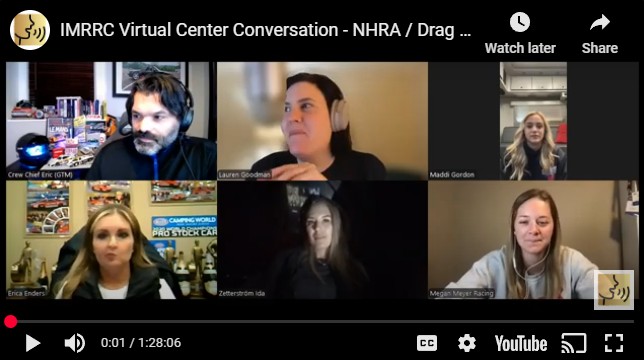
All of our BEHIND THE SCENES (BTS) Break/Fix episodes are raw and unedited, and expressly shared with the permission and consent of our guests.
Support Women in Motorsports North America
The following episode is brought to you in part by Women in Motorsports North America, a community of professional women and men devoted to supporting opportunities for women across all disciplines of motorsport by creating an inclusive, resourceful environment to foster mentorship, advocacy, education, and growth, thereby ensuring the continued strength and successful future of our sport.
Women in Motorsports North America is a not-for-profit organization that began in 2022. Known as “WMNA,” it is a community that focuses on Advancing, Connecting, and Enabling with its many partners, including industry executives, drivers, team members, OEM sponsors, racetracks, and more. Learn from co-founder Lyn St. James about how and why WIMNA got started by tuning in below.
Tune in everywhere you stream, download or listen!
 |  |  |
The Women with Drive summit continues its mission to bring together motorsports professionals. This unique event offers new pathways for individuals to explore career opportunities, discuss current industry challenges, and provides mentorship and resources for future growth in the industry.
If you’d like to stay informed about WIMNA and the Women with Drive Summit, be sure to log on to www.womeninmotorsportsna.com or follow them on social media @womeninmotorsportsna on Instagram and Facebook.



